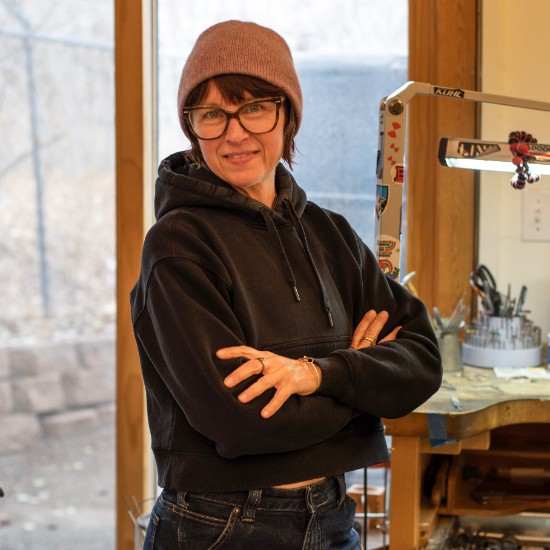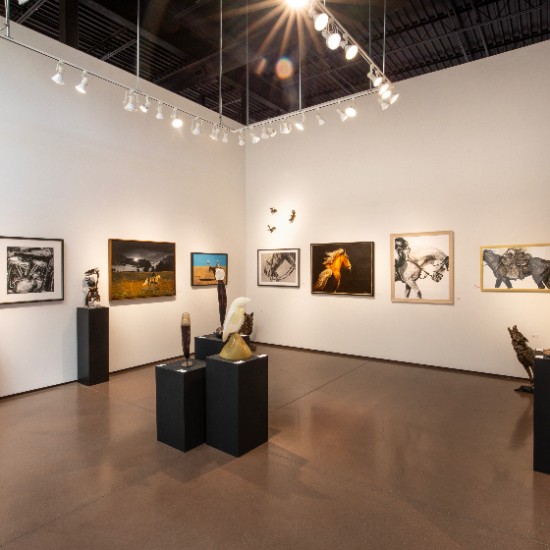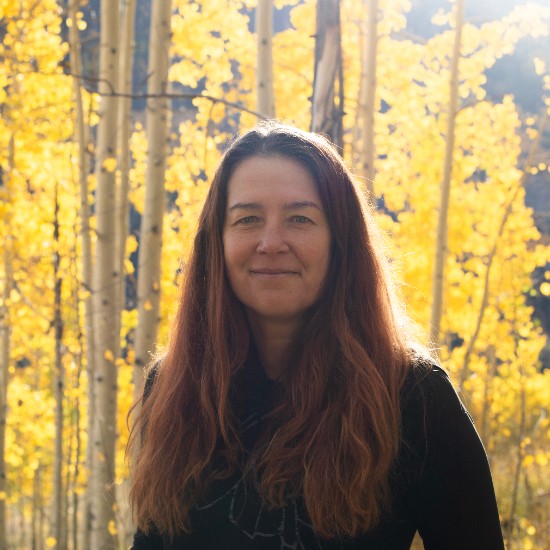by Rae Chavez
Robin Jones’ latest exhibition, The Mother Tree, is set to open at Santa Fe’s Blue Rain Gallery from October 25 to November 8, 2024. This new body of work delves into the profound connections between trees, humans, and the environment, drawing inspiration from Dr. Suzanne Simard’s research on forest ecology. I recently had the chance to speak with Jones about the themes driving her work and how The Mother Tree represents an evolution of her artistic vision.

Q: How does your upcoming show, The Mother Tree, differ from your previous exhibitions?
Robin Jones: This show is based on a book I read about a year ago that really impacted me—Finding the Mother Tree by Dr. Suzanne Simard. She’s a researcher from British Columbia who studies how trees communicate through underground fungal networks called mycorrhizal fungi. What’s amazing is that trees don’t just communicate within their own species; they share resources with other species too. The biggest and oldest trees, called "mother trees," send out carbon and nitrogen to other trees—even to species like Douglas firs and cedars that aren’t their own.
This concept of interconnectedness really resonates with me. We live in a hyper-individualized culture that emphasizes competition, but what trees are doing in the forest is the opposite. They cooperate, warn each other of danger, and share resources. That idea of community, of helping each other, is central to this new series.

Q: Many of your paintings feature forest birds, such as owls and falcons. Do they hold a special significance in this series?
Jones: Yes, absolutely. Most of the birds in this series are forest birds—owls, ravens, and hawks, for instance. There’s one painting of a great horned owl, another of barred owls, and a piece with ravens that has a bit of a witchy, Celtic vibe, which connects to my own Celtic ancestry. These birds, like the trees, reflect the theme of interconnectedness. They’re part of the forest ecosystem, and they represent the idea of communication and community that’s at the heart of this show.
Q: The young female figures in your paintings—are they based on real people, or are they imagined?
Jones: Most of them are based on real people, particularly from Gen Z and Gen Alpha. I paint these young figures because they represent the next generations who will inherit the planet. I sometimes alter their appearance slightly, but they’re mostly real kids living today. I feel a deep connection to these younger generations, given everything they’ve been through—pandemics, climate change, social issues. Their resilience and activism inspire me, and I hope that comes through in my work.


Q: Your work often asks viewers to reflect on their relationship with the environment. What do you hope people will take away from The Mother Tree?
Jones: I want my paintings to make people think about how we move through the world—how we treat the planet and what we consume. Painting these young figures is a way of reminding viewers that we’re responsible for what happens to future generations. The message is about our legacy, what we leave behind—not just for the next hundred years, but for seven generations ahead. I hope people leave the exhibition feeling inspired to think more deeply about their relationship with nature and their responsibility to protect it.


Q: Looking ahead, how do you see your work evolving? Are there new themes or directions you’re excited to explore?
Jones: I’ve started experimenting with incorporating more architectural elements, like cityscapes, into my work. I’m interested in exploring how urban environments intersect with nature, and how we tend to separate ourselves from it, when in reality, we are part of nature. It’s an exciting direction for me, and I think it will help expand the conversation around how we live and how we relate to the natural world.


The Mother Tree draws on these themes of interconnectedness and harmony in nature, presenting over fifteen new paintings that highlight the relationships between forests, creatures, and humans. Each work in the series offers a vision of hope and a reminder of our responsibility to the natural world.
One standout piece, Freedom Mandala, features a Tibetan girl against a dandelion mandala—a symbol of life and hope. In Finding the Mother Tree, a young girl climbs a tree, surrounded by barn owls flying in the moonlight, underscoring the show’s overarching message: we are all connected.

“As a culture, we often think in terms of competition, but nature shows us a different way—one of cooperation and community,” says Jones. “I hope this series serves as a reminder that it’s not too late to recognize that we’re all part of nature, and we all have a role in protecting it.”
Robin Jones’ The Mother Tree will be on display at Blue Rain Gallery from October 25 to November 8, 2024. Don’t miss this powerful and timely exhibition that invites viewers to connect more deeply with the environment and the future we share with it.
Click HERE to see all of Robin Jones available work.




